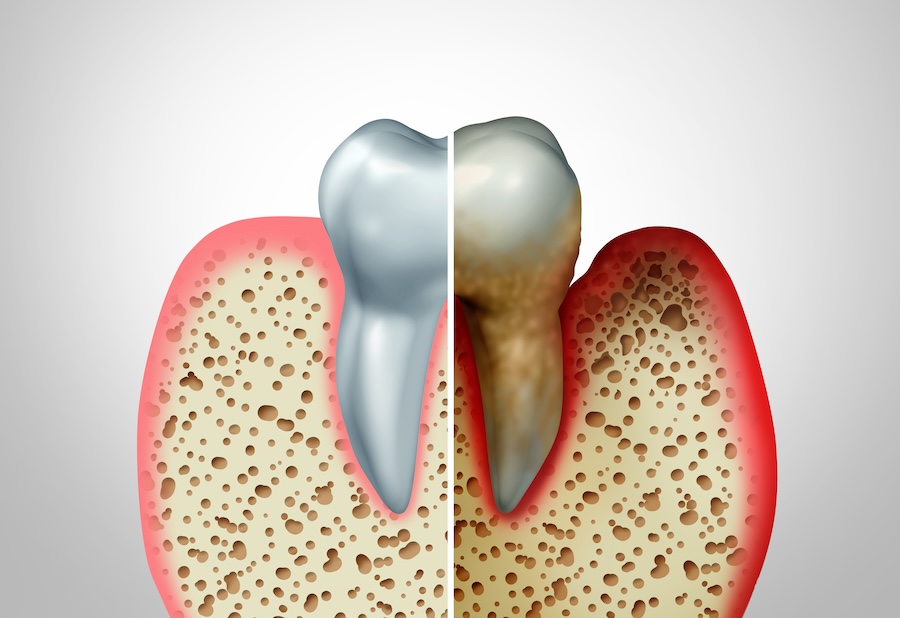Many people think brushing and flossing are just for clean teeth and avoiding cavities, but they’re crucial for your gum health, too. Healthy gums are the foundation of a healthy smile. When your gums are neglected, gum disease can sneak up and cause serious problems. But what exactly is gum disease, and how does it progress? Let’s break down the stages, what to watch for, and how to keep your gums in tip-top shape.
Stage 1: Gingivitis — The Early Warning Sign
Gingivitis is the earliest stage of gum disease. It happens when plaque builds up around your gumline, causing inflammation. The main signs? Red, swollen gums that bleed when you brush or floss, along with persistent bad breath. Gingivitis can also develop in pregnant women due to hormonal changes, known as pregnancy gingivitis. The good news? It’s reversible with proper oral hygiene and regular dental cleanings. If caught early, you can turn things around!
Stage 2: Periodontitis — When Things Get Serious
If gingivitis is left untreated, it can turn into periodontitis. At this stage, the inflammation starts to damage the bones and fibers that support your teeth. Your gums may pull away, forming pockets that trap more plaque. This can lead to loose teeth, persistent bad breath, and bone loss. Treatment often involves scaling and root planing, or a “deep cleaning,” which removes plaque and tartar from deep below the gumline. Your dentist will likely recommend you come for more frequent cleanings, called periodontal maintenance.
Stage 3: Advanced Periodontitis — The Final Stage
Advanced periodontitis is the most severe form of gum disease. By this point, the supporting structures of your teeth are significantly damaged. Gums recede further, teeth may loosen or shift, and some teeth may even need to be extracted. Intensive treatment and possibly surgery are required to manage it, but damage at this stage is often irreversible.
Risk Factors and How Gum Disease Affects Your Body
Gum disease doesn’t just happen overnight—it’s often influenced by a variety of risk factors. Smoking, poor oral hygiene, genetics, and underlying health conditions like diabetes can all increase your chances of developing gum disease. Even hormonal changes, such as those during pregnancy, can put you at higher risk. But the impact of gum disease goes beyond your mouth. Research shows that the bacteria associated with gum disease can enter your bloodstream and contribute to more serious health issues, including heart disease, diabetes complications, and respiratory infections. The inflammation caused by periodontal disease can also make it harder for your body to control blood sugar levels and may even increase your risk for certain cancers. Taking care of your gums is about more than protecting your smile—it’s about safeguarding your entire health!
Protect Your Smile at Southwest Smiles in Austin, TX
The best way to fight gum disease is through prevention! At Southwest Smiles in Austin, TX, Dr. Lakshmi Chittajallu recommends regular cleanings, a thorough at-home routine, and early intervention if you notice any signs of gum disease or bad breath. If you’re worried about your gums or have questions about treatment options, schedule a visit with us today. Let’s keep your smile healthy from the roots up!

